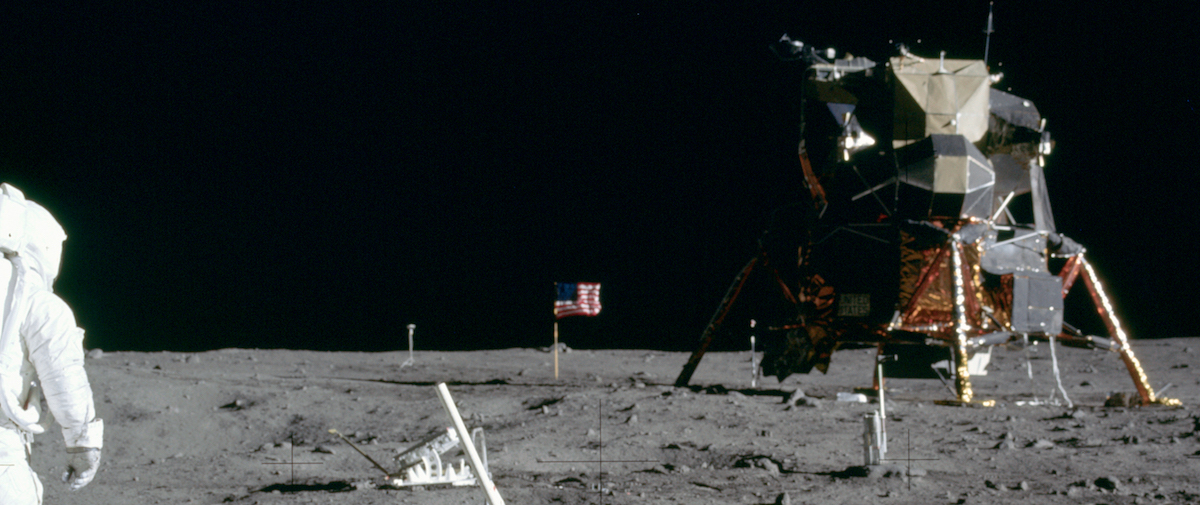Introduction
Chandrayaan-3 is the third and most recent lunar Indian Space Research exploration mission under the Chandrayaan programme of ISRO. Ofcourse, Chandrayaan-3 is not just a demonstration of India’s growing technical capabilities in space exploration but also aims to make significant scientific discoveries in an unexplored territory on Moon. As India’s Chandrayaan-3’s mission is on its way to success, here’s a flashback from a risk perspective of one of the most successful moon missions in the world.
The Apollo 11 mission is an enduring symbol of human achievement, marking the first successful moon landing in history. Behind this historic feat lies an intricate web of risk management strategies that allowed NASA to navigate the complexities of space travel and ensure the safety of the astronauts. In this article, we will delve deep into the lessons learned from the Apollo 11 mission, exploring how NASA’s risk management approach shaped its success and how these lessons can be applied to various domains.
- Comprehensive Risk Identification: One of the foundational pillars of NASA’s risk management approach during Apollo 11 was the comprehensive identification of potential risks. The mission encompassed a series of intricate stages, from launch and lunar orbit to the lunar landing and the return to Earth. Each of these stages brought forth a multitude of risks, both known and unforeseen.
Example 1: Launch Risks
The launch of the Saturn V rocket was fraught with risks. The explosive potential of the rocket’s fuel and the intricacies of staging required careful consideration. To mitigate these risks, NASA engineers conducted extensive simulations and tests to ensure the rocket’s structural integrity and the reliability of its propulsion systems.
Example 2: Lunar Landing Challenges
Landing on the moon was an unprecedented endeavor, and the risks were magnified by the unknown lunar surface conditions. The risk of a crash landing was significant. NASA tackled this by utilizing the lunar module’s descent engine to control the spacecraft’s speed and descent trajectory, allowing Neil Armstrong to pilot the module to a safer landing site when he recognized the planned site was strewn with boulders.
- Prioritizing and Categorizing Risks: Not all risks are equal in terms of their potential impact. NASA employed a risk matrix to categorize risks based on their severity and likelihood. This categorization enabled the team to prioritize their efforts and resources towards addressing the most critical risks.
Example 3: Risk Matrix for Astronaut Safety
Astronaut safety was a paramount concern. The risk matrix helped NASA identify potential hazards that could jeopardize the astronauts’ lives. This included risks related to life support systems, radiation exposure, and equipment failures. By focusing on high-impact, high-likelihood risks, NASA ensured that the astronauts were adequately protected throughout the mission.
- Innovation and Creative Problem-Solving: The Apollo 11 mission demonstrated NASA’s exceptional capacity for innovation and creative problem-solving in the face of unexpected challenges.
Example 4: The Lunar Module Computer Anomaly
During the lunar descent, the onboard computer of the lunar module (LM) started receiving more data than it could process, triggering multiple alarms and threatening to abort the landing. Astronauts Neil Armstrong and Buzz Aldrin had to quickly assess the situation and make a decision to continue the descent manually. Their ability to adapt under pressure exemplified the importance of human judgment and creative thinking as backup solutions.
- Developing Contingency Plans: A core element of Apollo 11’s risk management strategy was the development of contingency plans. These plans were critical for ensuring the safety of the astronauts and the success of the mission even in the face of unexpected events.
Example 5: Abort Procedures
The Apollo 11 spacecraft had well-defined abort procedures for different phases of the mission. In the event of an emergency during launch, lunar orbit, or lunar landing, the crew could execute specific maneuvers to safely return to Earth or the command module. These procedures acted as lifelines, providing a clear course of action in case of critical failures.
- Real-time Monitoring and Adaptation: Apollo 11’s journey to the moon wasn’t a static, preplanned trajectory. It required continuous real-time monitoring and adaptability to respond to evolving risks and challenges.
Example 6: Mid-Course Corrections
During the journey to the moon, the spacecraft occasionally required mid-course corrections to ensure accurate trajectory. The mission control team had to analyze data, assess risks, and calculate precise maneuvers to keep the spacecraft on its intended path. This real-time adjustment highlighted the importance of monitoring and responsiveness.
- Learning from Failures: Tragedy struck NASA with the Apollo 1 accident, in which a cabin fire during a pre-launch test claimed the lives of astronauts Gus Grissom, Ed White, and Roger Chaffee. This incident emphasized the importance of learning from failures to enhance risk management.
Example 7: The Apollo 1 Tragedy
The Apollo 1 disaster led NASA to overhaul its approach to safety. The investigation into the incident resulted in the identification of design flaws and procedural inadequacies that contributed to the accident. NASA used this painful lesson to refine safety protocols, improve communication, and develop a safety culture that permeated subsequent missions.
Conclusion
The Apollo 11 mission stands as a testament to human determination, innovation, and risk management. The successful moon landing was not simply a result of luck, but a carefully orchestrated dance of meticulous planning, adaptability, and a commitment to astronaut safety. The risk management lessons learned from Apollo 11 continue to resonate across industries, demonstrating the value of thorough risk identification, creative problem-solving, contingency planning, real-time adaptation, and learning from failures. As we forge ahead into new frontiers, the legacy of Apollo 11 serves as a guiding light for those seeking to manage risks and achieve the extraordinary.














